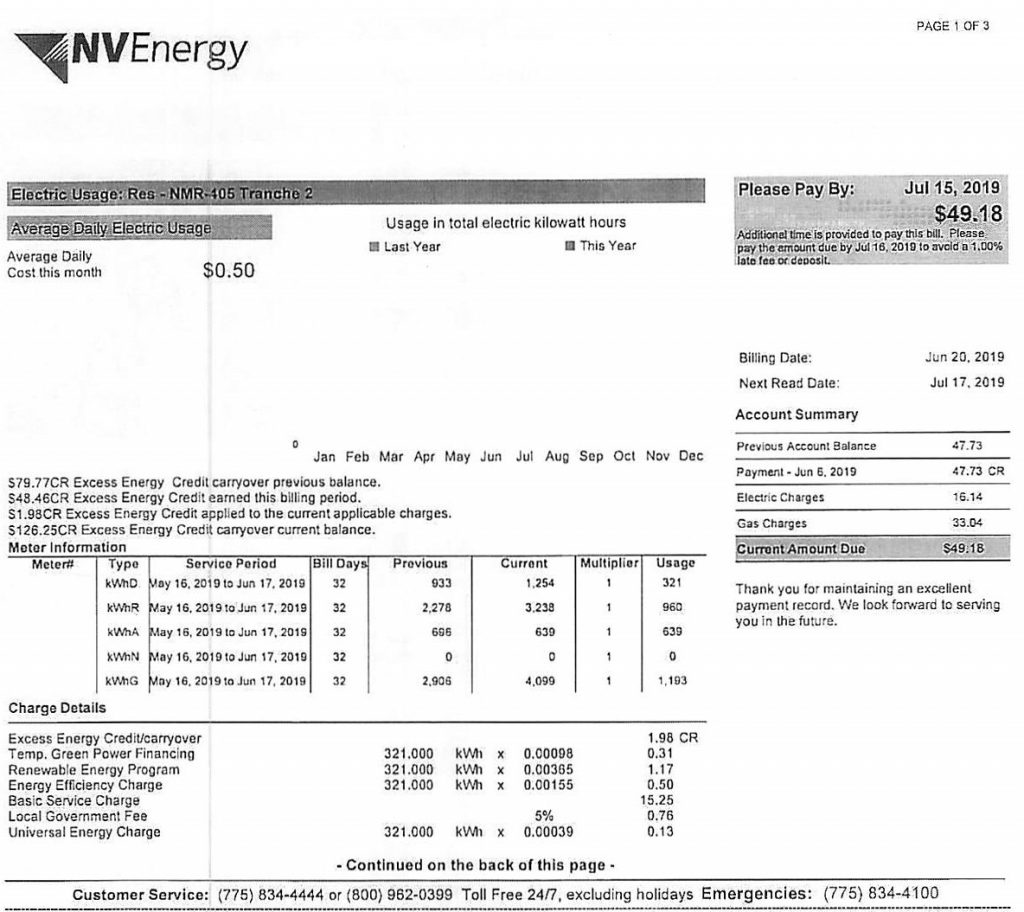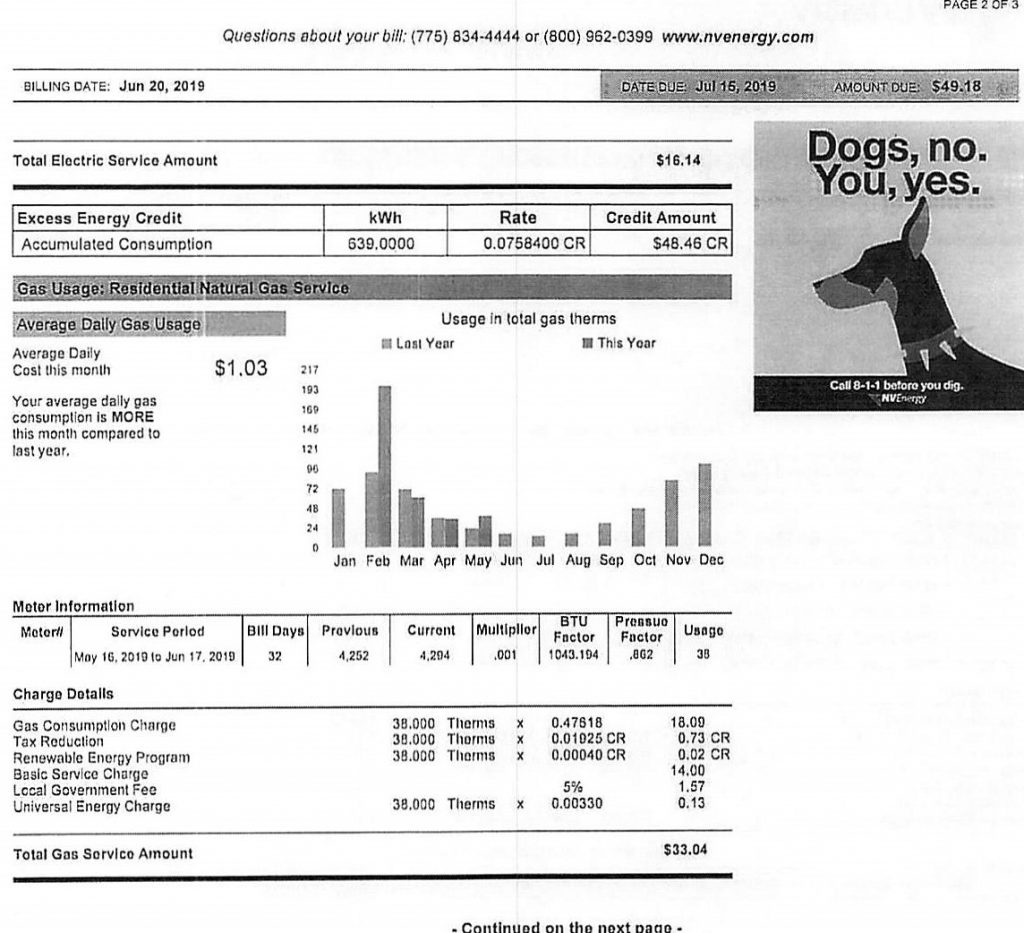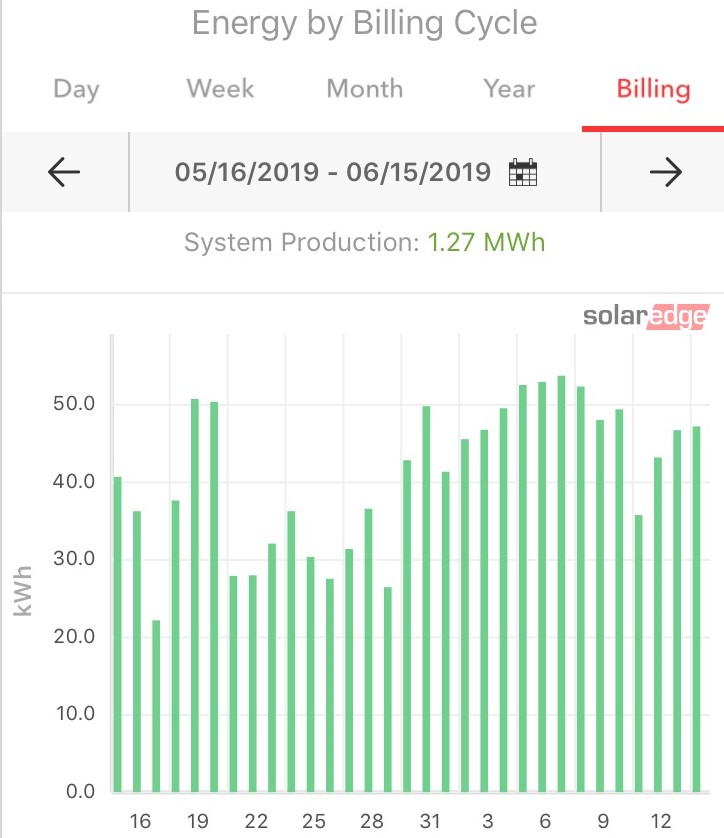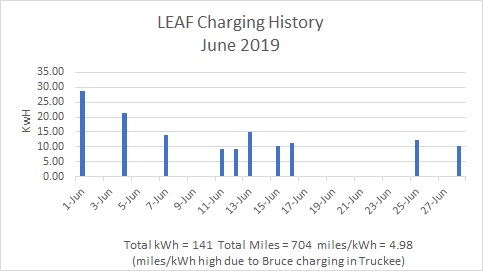This month we were home and we had the LEAF for the whole month. But it seems there is always something unusual going on that creates anomalies in the data! I was gone to Florida for 3 weeks. While I was gone, our neighbors had an accident with their Tesla and needed to borrow the LEAF while it was being repaired. Bruce flies as a charter pilot with a private airline in Truckee, which is a 35-mile drive up I-80 from Reno. He used the car from June 12-16, making four round trips totaling about 280 miles. While he was at the airport, he plugged the car into the 110-volt outlet in the hangar. We don’t have readings for how many kWh were added during those charges, so figures are again a little off on the LEAF Charging History graph.
The other thing I discovered this month was the Billing Period graph on the SolarEdge monitor, which is set to our NV Energy billing period, give or take a day or two. This should get us closer to what the NV Energy bills shows under kWhGenerated, give or take margin of error between the two monitors.
And we just got this link from SolarEdge that will allow you to look at our solar system live as it produces power! It lets you look at our power generation and also shows really cool things, like the pounds of CO2 emissions saved and the equivalent number of trees planted over the life of the system. Check it out!
https://monitoringpublic.solaredge.com/solaredge-web/p/site/public?name=Ashurst%20Solar#/dashboard
Here’s the data:

Page 1 of June 2019 NV Energy Bill

Page 2 of June 2019 NV Energy Bill

June 2019 SolarEdge Graph using Billing Period

Interpretation:
The system generated approximately 1.2 megawatts of power. We used 1/2 megawatt, we banked approximately 700 kilowatts. Same as last month!
From the NV Energy bill:
kWhGenerated = 1193
kWhReceived = 960 (difference 1193-960=233 used directly off solar system)
kWhDelivered = 331
kWhAccumulated = 696 (960-321=639) X $.08 = $48.46 credit banked
The $48.46 calculated above is added to the previous month’s Excess Energy Credit ($79.77), less some minor credits applied to current charges ($1.98), for a total carryover of $126.25. At $.09 per kWh retail electricity rate, this equals 1,403 stored kilowatts to date ($126.25/$.09).
Total usage = 331 (kWhD) + 233 (directly used off solar system) or 564 kWh. This is right in there with our usual usage without a vacation.
Shockingly, our little LEAF, even with Bruce’s 4 days of commuting to Truckee, used less than we had anticipated, only 141 kWh! We’re going to call her little miss Sippy. (She’s also zippy, so what’s not to love? Sippy and zippy!)
But it was interesting to note that Bruce’s commute used an average of 11.5 kWh per day, very close to the 12 kWh per day Travis built in to our system. We just don’t drive that much. We also learned the difference between using our SolarEdge charger vs. the 110-volt charger Bruce used in Truckee. The SolarEdge adds about 30% of battery (approx. 30 miles) per hour of charging and the 110-volt charger only adds 5% of battery (approx. 5 miles) per hour of charging! This discovery shows that you definitely want to add a 220-volt charger to your home if you are planning on having an EV.
Just for grins, let’s do the math on what it would cost an average commuter to power an EV for a month directly off the grid (if you didn’t have a solar system):
12 kWh/day (approx. 36 miles, more in town) X 30 days in a month = 360 kWh
Multiply this by the $.09 retail electricity rate (BTW, you can get better rates at night) and you get $32.40 total monthly cost of commuting with an EV.
Now let’s look at the average gas-powered (ICE) vehicle:
Average MPG = 25. Divide that into 36 average miles/day = 36/25=1.44 gallons/day
Multiply by national average cost per gallon: $3 X 1.44 gallons/day = $4.32/day total cost of gas.
Multiply by 30 days in the month ($4.32 X 30)=$129.60 or $130
The difference is $130 gas – $32 electric = $98 in savings per month! Plus 0 emissions, great speed, lower repair costs. If you can live with the range restrictions (which are expanding all the time), an EV is an awesome transportation option.